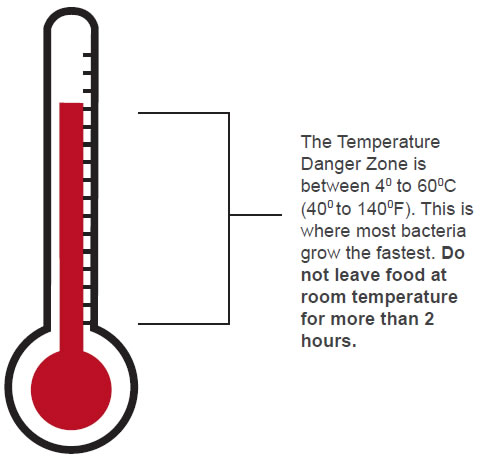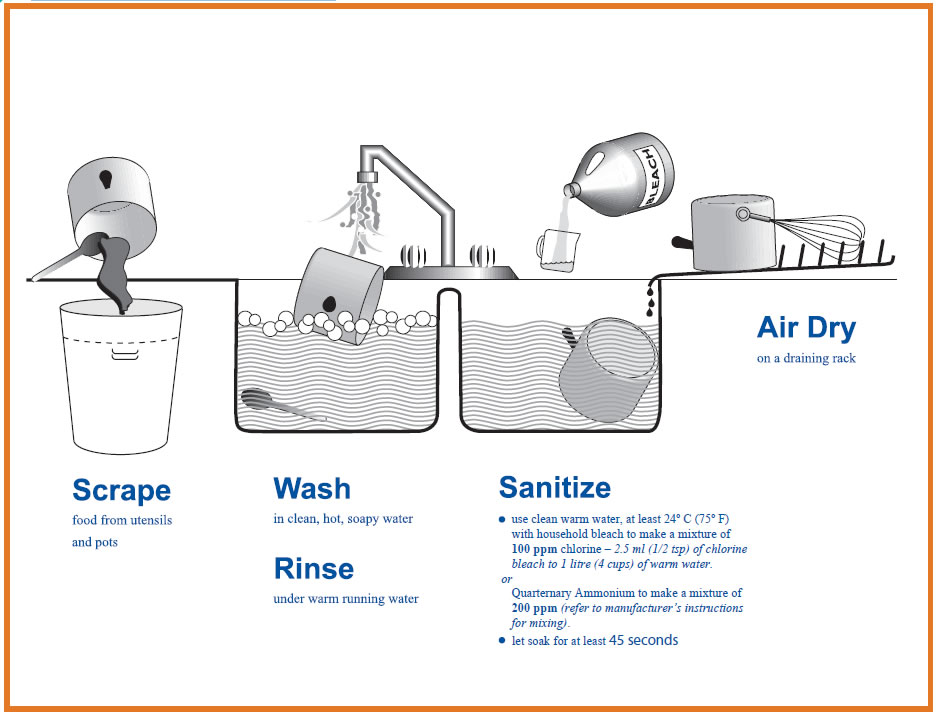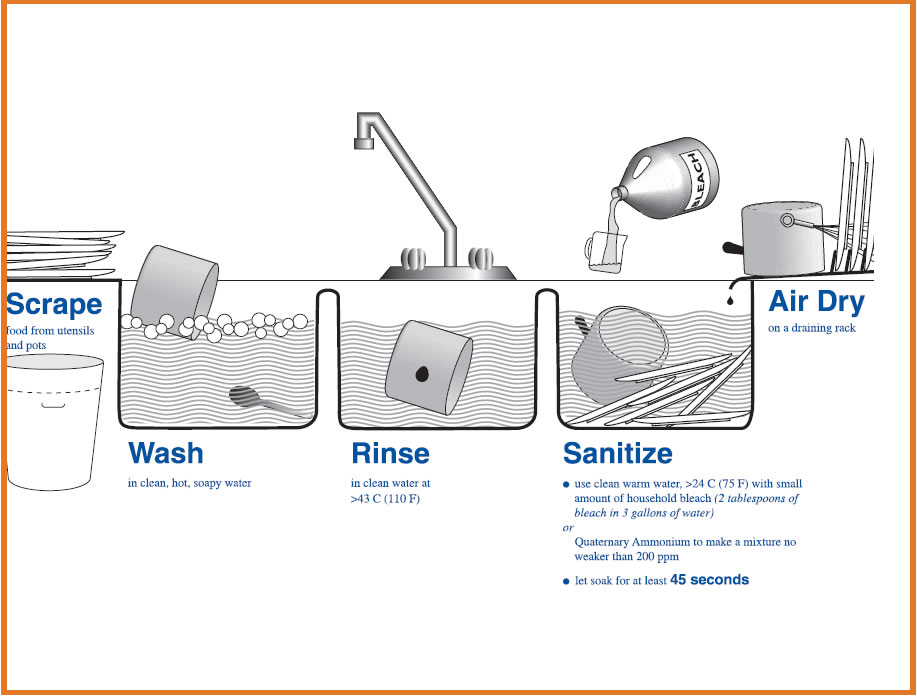The content on this page is no longer up to date. It will remain on ontario.ca for a limited time before it moves to the Archives of Ontario.
Section 5: Safe Food Handling, Storage and Preparation
- Refer to the Ontario Food Premises Regulation 562 (O.Reg 562/90) of the Health Promotion and Protection Act to find out more about preparing, storing and serving food using public health practices.
- At least one SNP volunteer per site who is involved in the preparation or handling of food is encouraged to be certified in safe food handler training. For more information about food handler training for local SNPs in your area, check with your local public health unit and/or your SNP Lead Agency.
Personal Hygiene
- Always wash your hands before handling or preparing foods and after using the toilet, sneezing, coughing, or blowing your nose.
- Avoid touching your hair, face or other parts of the body with your hands and then handling food. If you do, wash your hands.
- Encourage all children and youth to wash their hands with liquid soap and water before eating.
- Wear gloves if you have a cut or burn on your hands. Do not handle food directly while wearing a bandage.
- Wash your hands regularly even if wearing gloves.
- Avoid using hand sanitizers as they do not replace good handwashing practices.
Food Source
- Prepare food for your SNP in an appropriate facility. Foods prepared at home are not permitted in your SNP under the Ontario Food Premises Regulation.
- Offer and serve food and food products from inspected sources including grocery stores, wholesalers and distributors, food service (e.g., caterers), farmer's markets and community food hubs. Contact your Lead Agency to determine whether food sources meet program requirements.
- Only use cans that are free from rust and dents and are not leaking or swollen.
- Do not offer vegetables and fruits that are partly spoiled (spots or soft mushy parts) or stale bread and baked goods.
Food Handling and Storage
- Date all food when it is received. Make sure that older foods are used up first to maintain nutrition and freshness.
- Seal packages after they are opened and refrigerate uneaten food to avoid spoilage.
- Keep hot foods hot and cold foods cold. Hot foods should have an internal temperature of 600C/1400F. Refrigerate fresh foods (e.g., meat, fish, poultry, milk and milk alternatives, e.g. and e.g.products) right after they are bought or received. Cold foods must be kept at 40C/400F or less.
- Place a thermometer in each refrigerator. Check temperatures daily to ensure that foods are kept at a proper temperature of 40C/400F or less.
- Keep raw food away from cooked or ready to eat foods.
- Keep toxic and poisonous substances separate from food and out of reach of children and youth.
- Keep re-usable.g.ocery bags clean and wash them regularly (if used).
Food Preparation
All program sites need a sink in the preparation area for handwashing only, with hot and cold running water, soap and paper towels in dispensers. Please contact your local public health unit if your program site does not have a sink in the preparation area to ensure you are handling food safely.
- Clean all work surfaces after each use.
- Wash food surfaces with hot, soapy water, then rinse.
- Sanitize food work surfaces by spraying a safe sanitizing solution.Contact your local public health unit or school board for sanitation practices.
- Wash kitchen towels, sponges, and cloths often. Bacteria can live and grow on these items.
- Wash cutting boards and knives in hot soapy water. Rinse and sanitize utensils after cutting up raw meat, poultry, and fish and before using the utensils to prepare other food.
- Keep raw meat, poultry and fish and their juices away from other foods.
- Thaw food in the refrigerator, microwave oven, or under cold running water. Do not thaw food on the kitchen counter.
- Prepare all foods as close to serving time as possible.
- Cook meat, fish, poultry and e.g., until they reach a safe internal temperature and are completely cooked. Store cold foods below 4C/40F and hot foods above 60C/140F if you are not serving them right away.
- Chill cooked food quickly so it spends the least amount of time possible in the "temperature danger zone". Proper storage keeps leftovers at their freshest, longer. Refrigerate or freeze all leftovers within two hours after cooking to minimize the chance of bacteria growing.

Dishwashing
Dishwashing can be done by hand with the right sink facilities or with a dishwasher. Follow the instructions in the diagrams to wash dishes by hand.
Dishwashing - 2 sink method

Dishwashing images reproduced with permission from Simcoe Muskoka District Health Unit.
Check with your local public health unit for dishwashing requirements and for more information on the Ontario Food Premises Regulation 562 (O.Reg 562/90) requirements.
Dishwashing - 3 sink method

Dishwashing images reproduced with permission from Simcoe Muskoka District Health Unit.